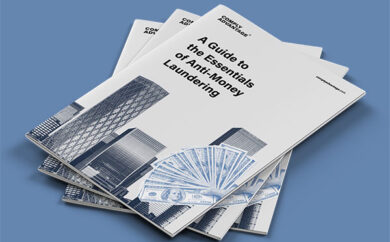

The Financial Action Task Force (FATF) has updated its guidance for the virtual asset (VA) industry following a public consultation.
The 111-page 2021 Guidance for a Risk-Based Approach to Virtual Assets and VASPs (virtual asset service providers) has been much-anticipated by regulatory bodies globally as the sector continues to grow and evolve. A US government working group published its own recommendations on stablecoins just days after the FATF released its new paper.
In October, Spain also introduced new registration guidelines for VASPs, stressing that VASPs will need to register “regardless of whether they are also registered in other administrative records in the Bank of Spain or other related authorities”.
Key takeaways for compliance teams
The 2021 FATF report outlines six critical areas of focus for compliance teams operating in VASPs:
- Clarification of the definitions of virtual assets and VASPs.
- Guidance on how FATF standards apply to stablecoins.
- Additional guidance on the risks and tools available to countries to address the money laundering and terrorist financing risks of peer-to-peer transactions.
- Updated guidance on the licensing and registration of VASPs.
- Additional guidance for the public and private sectors on the implementation of the travel rule.
- Principles of information-sharing and co-operation among VASP supervisors.
The updated report also includes direction on how to identify, assess and effectively mitigate the risks associated with virtual asset activities, and the provision of VASP products and services. Considerations outlined by the FATF include:
- The number and value of VA transfers, price volatility, the value in circulation, the number of jurisdictions, and how a VA is used for cross-border payments and remittances.
- Potential anti-money laundering and counter-terrorism financing (AML/CFT) risks with VAs exchanged for fiat currency or other VAs.
- Nature and scope of the VA payment channel.
- Number and value of VA transfers relating to illicit activities.
- Use of anonymizing techniques for VA funds transfer.
- Exposure to IP anonymizers such as The Onion Router or Invisible Internet Project.
- Size of business, existing customer base, stakeholders, the significance of cross-border activities by the issuer.
New guidance on stablecoins
The guide has a notable focus on stablecoins, an area where the FATF has worked with G20 finance ministers and central bank governors, and which is currently under discussion in the US, where issuers look set to be regulated like banks. The guide notes that stablecoins’ potential for anonymity, global reach, and use to layer illicit funds, makes them a potential AML/CFT risk.
Mass adoption would only increase this risk, as criminals’ ability to use a VA as a means of exchange depends to a great extent on it being freely exchangeable and liquid, which mass adoption could facilitate. The guide also includes a valuable case study that outlines a hypothetical stablecoin firm and how FATF standards apply to its operations.
The guide contains a good set of indicators on how countries looking to regulate VASPs further will need to proceed. This includes requiring them to meet appropriate licensing and registration criteria, demonstrating that prior to launch they already have policies and procedures in place and that they are employing competent and trustworthy compliance staff.
As a jurisdiction may have a significant number of VASPs to register if it is setting up a new registration system, authorities need to ensure they have adequate resources available, and sufficient flexibility is built in to prioritize applications.
New clarity on the travel rule
The guide also refines the so-called travel rule with additional guidance on the accompanying information required with wire transfers, including the originator and beneficiary’s name and account number.
This new report provides important clarification on the virtual asset landscape. Firms can use the guidance provided by FATF to proactively update their AML/CFT controls ahead of the introduction of new regulations by national governments.
In a clear sign, that compliance teams should expect to see more guidance from the FATF, the body said it continues to “closely monitor the virtual assets and VASPs sector for any material changes that necessitate further revision or clarification of the FATF Standards. This includes in relation to areas covered in this guidance such as stablecoins, peer-to-peer transactions, non-fungible tokens, and decentralized finance.”
To learn more about the latest trends in crypto and decentralized finance, check out our ‘State of Compliance: Where Are We Now?’ webinar on-demand.
Originally published 01 November 2021, updated 12 February 2025
Disclaimer: This is for general information only. The information presented does not constitute legal advice. ComplyAdvantage accepts no responsibility for any information contained herein and disclaims and excludes any liability in respect of the contents or for action taken based on this information.
Copyright © 2025 IVXS UK Limited (trading as ComplyAdvantage).
